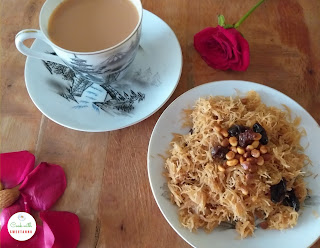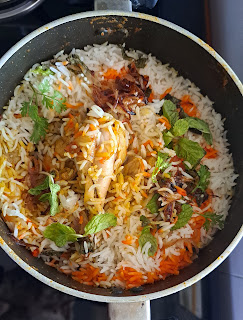Hello Friends,
Hope you all are doing well, eating super well and exercising at least 4 times a week. So this Sunday I stirred up an authentic recipe of Tittori. If those who are wondering what tittori is, it is a wholesome Parsi dish made of sprouted and peeled vaal. We bawas always have a funny name for everything, for this its tittori.
Lets start the week with its recipe just the way my grandmother used to cook. My Kharmen Babaiji used to add koru (pumpkin) and small Methi leaves with a dash of khaman besides all the other regular masalas. It felt so good trying out this dish as it turned out just the way I wanted it. Note I didn't find small methi so used the regular one. You can skip it if you wish. Now gather the ingredients and start cooking.
250 grams sprouted and peeled field beans
3 tbsp oil
2 chopped onions
3 chopped tomatoes
1 chopped green chilly
Few sprigs of Methi - (optional)
1 small piece of pumpkin
1 tbsp dry coconut powder
1/2 tsp turmeric
1/2 tsp cumin powder
1 tsp dhansak masala
1 tbsp ginger-garlic paste
1/2 tsp garam masala
Chopped coriander leaves
Salt to taste
Answer- Wash the vaal and soak it in water for at least 12 hours till it gets soft. Then strain all the water and transfer it to a muslin cloth. Allow it to rest for another 12 hours. The field beans will sprout. The skin can be removed easily by again adding water to it.
7. Add
the garam masala, dhansak masala, cumin powder,
turmeric powder and salt.
Today I miss my dear grandmother immensely. Hope to share more recipe of my sweet kharmen Bapaiji
Hope you all are doing well, eating super well and exercising at least 4 times a week. So this Sunday I stirred up an authentic recipe of Tittori. If those who are wondering what tittori is, it is a wholesome Parsi dish made of sprouted and peeled vaal. We bawas always have a funny name for everything, for this its tittori.
Lets start the week with its recipe just the way my grandmother used to cook. My Kharmen Babaiji used to add koru (pumpkin) and small Methi leaves with a dash of khaman besides all the other regular masalas. It felt so good trying out this dish as it turned out just the way I wanted it. Note I didn't find small methi so used the regular one. You can skip it if you wish. Now gather the ingredients and start cooking.
Ingredients
250 grams sprouted and peeled field beans
3 tbsp oil
2 chopped onions
3 chopped tomatoes
1 chopped green chilly
Few sprigs of Methi - (optional)
1 small piece of pumpkin
1 tbsp dry coconut powder
1/2 tsp turmeric
1/2 tsp cumin powder
1 tsp dhansak masala
1 tbsp ginger-garlic paste
1/2 tsp garam masala
Chopped coriander leaves
Salt to taste
Method
How to Sprout the field beans?
Answer- Wash the vaal and soak it in water for at least 12 hours till it gets soft. Then strain all the water and transfer it to a muslin cloth. Allow it to rest for another 12 hours. The field beans will sprout. The skin can be removed easily by again adding water to it.
How to cook Tittori?
1. Finely chop the onions, tomatoes, green chilly, pumpkin, methi and keep ready for the cooking procedure.
2. Heat the oil in deep bottom pan, now add the onions and green chilly. Sauté on a medium flame till pinkish in colour.
3. Add the ginger-garlic paste and sauté on a medium flame for another 1 minute till the raw aroma goes away.
4. Add tomatoes and cook for another one minute.
5. Now add the methi, pumpkin and let it all cook together till it gets pulpy. Mash it with the back of a spoon to fasten the process.
6. Add the dry coconut powder at this stage, saute for two minutes.
7. Add
the garam masala, dhansak masala, cumin powder,
turmeric powder and salt.
8. Now add a cup of water to this and let it boil.
9. Slowly add the field beans, cover and cook stirring occasionally. Cook on low flame with lid on.
10. Press with fingers. Field beans cook easily. If it can be pressed with fingers it is cooked.
11. Garnish with Coriander leaves. This is best eaten with fried bombayducks (bombil). I served it with bombil achhar and rotis.
My Bapaiji tip
"Cook on slow flame." She would sometimes add all the ingredients together and let it cook on slow. Remember in those days they had a Primas choola. She added a red chilly powder too, all according to taate and never measured any ingredients. But her dishes always were relished and appreciated by the entire family.


































